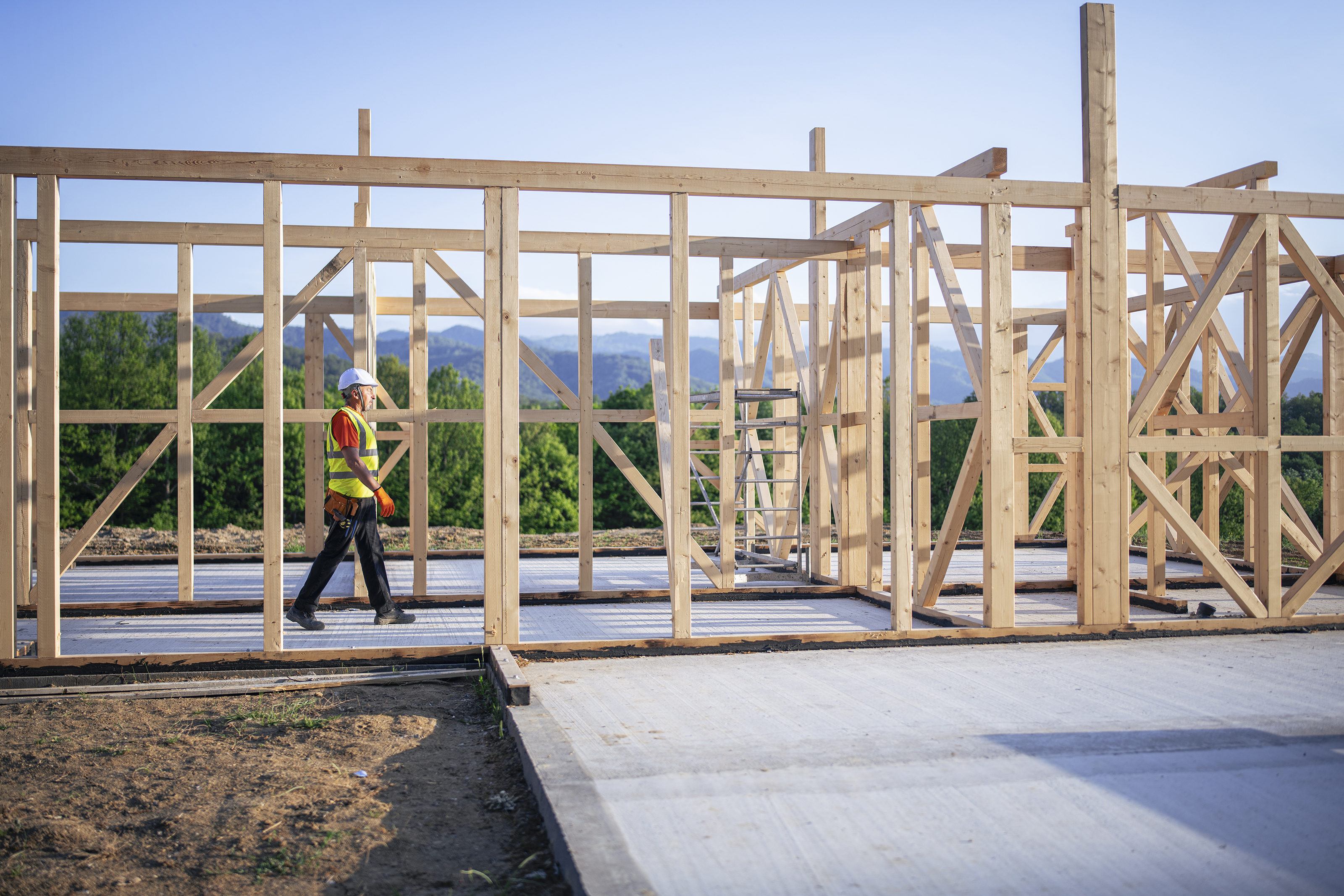Building regulations changes now in effect - here's what you need to know
Important new building regulation changes have come into force, which will now impact new homes and some existing homes

A significant update to the Building Regulations is now in force and the new rules could have a marked impact on self builders, extenders and renovators.
The changes, first announced in December 2021, come with £6.6m of direct investment into improving the energy efficiency of buildings. Heating and powering buildings currently makes up around 40% of total energy use, the government says, and the ambition is to reduce this significantly. From 15 June 2022, all new homes must produce 30% less carbon dioxide emissions than current standards.
The Building Regulations also include new standards to reduce energy use and carbon emissions during home improvements. However, the old rules may still apply to certain home projects depending on how far along in the planning process you are.
The Department for Levelling Up, Housing and Communities (DHLUC) believes the new regulations will help the UK to meet its net zero target, and marks a stepping stone towards the introduction of the Future Homes Standard in 2025.
Here’s everything you need to know about the new regulations and the key changes that could affect your project.
Which Building Regs Are Affected?
Energy expert David Hilton has written about how self builders and renovators can best embrace the new regulations and how the introduction of new rules is a good thing for improving the quality of our homes.
Part L (Conservation of Fuel and Power)
The uplift to Building Regulations Part L includes updated insulation requirements for new homes, which will now be assessed under a new Standard Assessment Procedure (SAP) calculation called SAP10.
Get the Homebuilding & Renovating Newsletter
Bring your dream home to life with expert advice, how to guides and design inspiration. Sign up for our newsletter and get two free tickets to a Homebuilding & Renovating Show near you.
Self builders will also have to conduct on-site audits to confirm that the design details in their plans have been constructed, and photographs must be taken as evidence. U-values have also been increased and the recommendations discourage thermal bridging.
For existing homes, minimum new fabric efficiency standards will now apply if you’re looking to introduce new or replacement thermal elements to your home, such as new windows and doors - meaning a tightening of U-values.
Moreover, there are new rules for the amount of glazing included in extensions, improvements for lighting design and a new low flow temperature requirement for heating systems. The maximum flow temperatures in a central heating system is now 55°C where it was previously over 75°C.
Part F (Ventilation)
The uplift to Building Regulations Part F is intended to make it easier for self builders and renovators to understand the impact of ventilation in a home.
Arguably the primary requirement to note for renovators and extenders is that when energy efficiency work is done in existing homes, the ventilation must not be made any worse, in line with existing measures for controlled services and fittings.
Mandated checklists will now make it easier for installations of mechanical ventilation products - both in new homes and existing homes - and will come with guidance on why ventilation is important.
There are also new recommendations for all replacement windows to be fitted with trickle vents unless a) there is an alternative form of ventilation, such as air bricks or whole house Mechanical Ventilation with Heat Recovery (MVHR), or b) that the works do not result in the ventilation being worse than before the works were done.

There are Two New Building Regs

Need more advice or inspiration for your project? Get two free tickets to the Homebuilding & Renovating Show.
Part O (Overheating)
The main intention behind Building Regulations Part O is to limit excess solar gain in new and existing homes and remove excess heat.
Compliance can be achieved through one of two methods (The Simplified Method or the Dynamic Thermal Modelling Method), with standards based on whether a house is cross-ventilated or not. Also, a standard is included for the maximum amount of glazing allowed in a single room.
Part S (Electric Vehicle Charging)
Building Regulations Part S aims to futureproof homes and buildings via the installation of charging points for electric vehicles, and provides technical guidance regarding charging them in our homes.
It could have an instant impact on self builders and, significantly, a £3,600 price cap per charge point will be introduced, which is designed to stop the installation of EV chargers being prohibitively expensive.
Are The Rules Now in Effect?
Yes. However a grace period will take effect until June 2023 for projects.
This means that if your project had Building Regulations approval before 15 June 2022 then the old standards still apply, but you have until 15 June 2023 to begin the work before the approval lapses.
Why Have The Regulations Been Updated?
The regulations are a key update on the road to the Future Homes Standard - renamed the Future Homes and Buildings Standard in December 2021 - which comes into effect in 2025.
The Future Homes Standard will introduce more stringent changes to make buildings more energy efficient, but these measures are a stop-gap until then.
The changes to the Building Regulations were published in December alongside the government’s response to the second Future Homes Standard consultation (called the Future Buildings Standard) from earlier in 2021.
In 2023 a full technical consultation for the launch of the Future Buildings Standard will begin, ahead of the Standard's introduction in 2025.
Moreover, any new homes built after 2025 will not require further energy efficiency retrofit work to become zero-carbon as the electricity grid continues to decarbonise.
Builders Need 'Clear Guidance'
In April, the Federation of Master Builders (FMB) warned that builders are in need of urgent clear guidance to help them understand the new changes. 52% of builders were not yet prepared or aware of the changes, according to the FMB's State of Trade Survey.
Brian Berry, Chief Executive of the FMB, said: “The FMB’s State of Trade Survey highlights just how underprepared the building industry is for regulatory changes coming into force in June. Builders can’t be blamed for this situation given the poor communication and engagement coming from government.
"The government needs to help address this issue by providing clear guidance to help builders understand what is expected of them.”
Jack has worked in journalism for over a decade and was the former News Editor of Homebuilding & Renovating between 2019 until 2023. In his time as News Editor he broke the most relevant and beneficial stories for self builders, extenders and renovators, including the latest news on the construction materials shortage, planning permission and green initiatives. In 2021 he appeared on BBC's The World at One to discuss the government's planning reforms.
He enjoys testing new tools and gadgets, and having bought his first home in 2013, he has renovated every room and recently finished a garden renovation.

